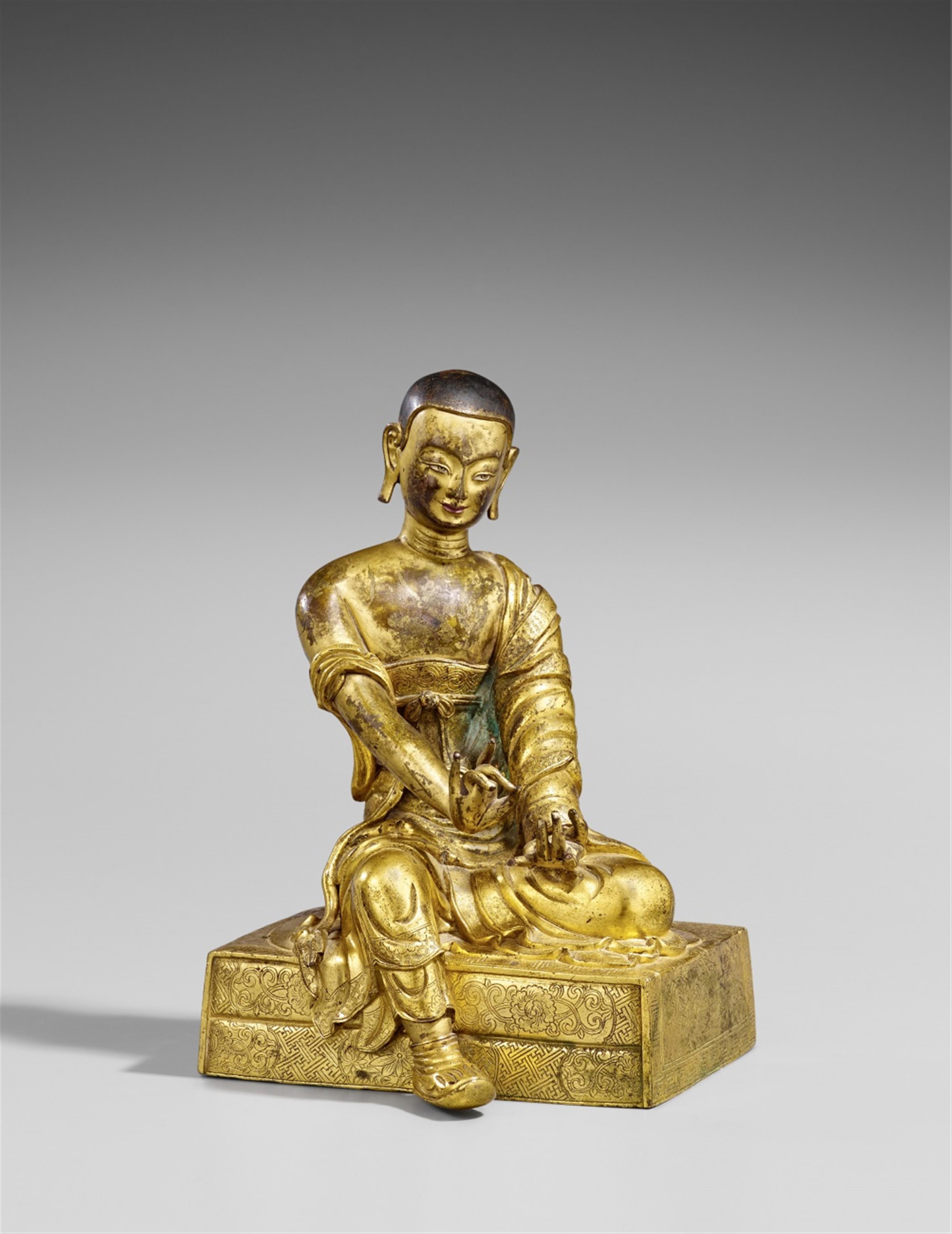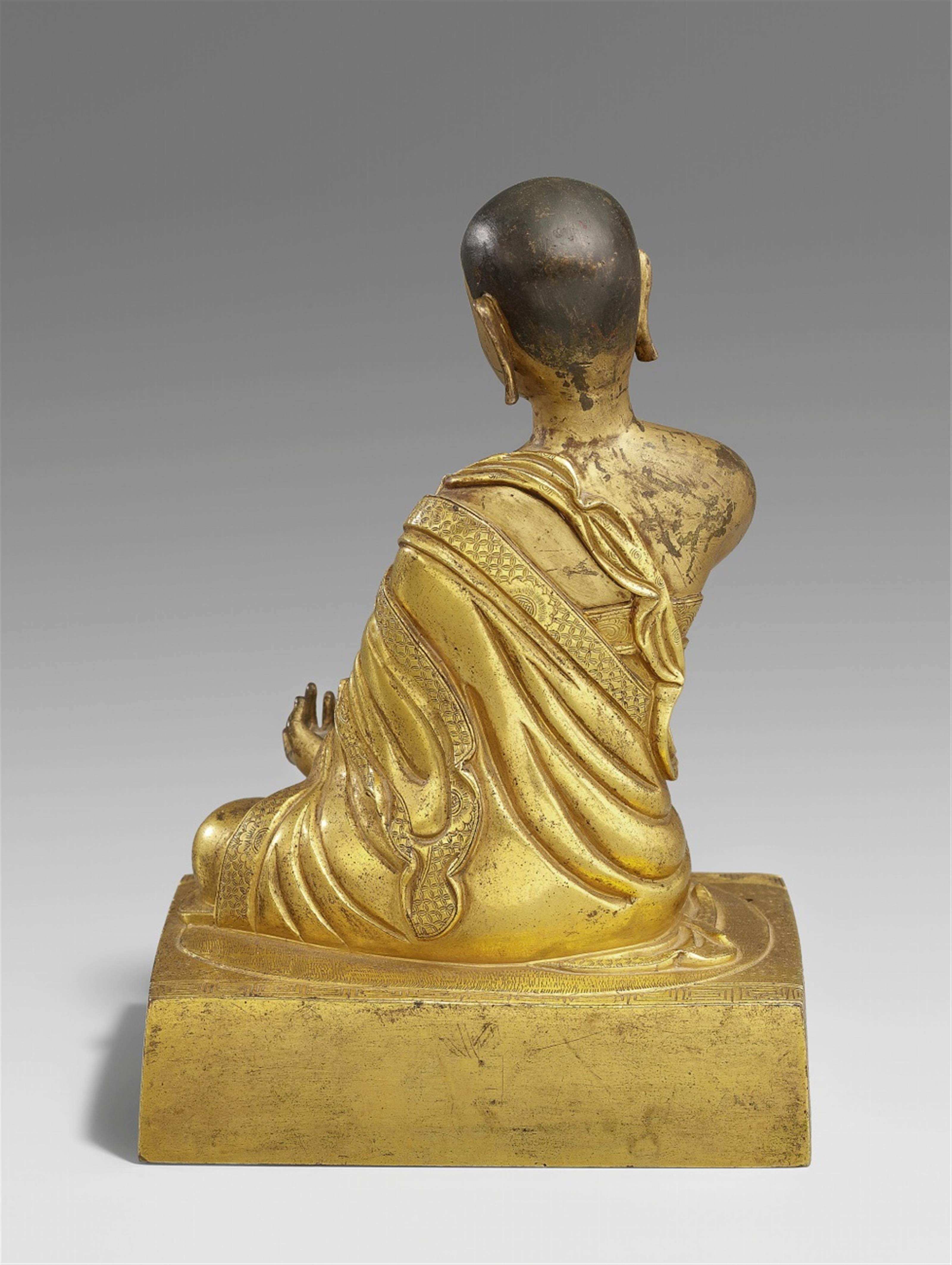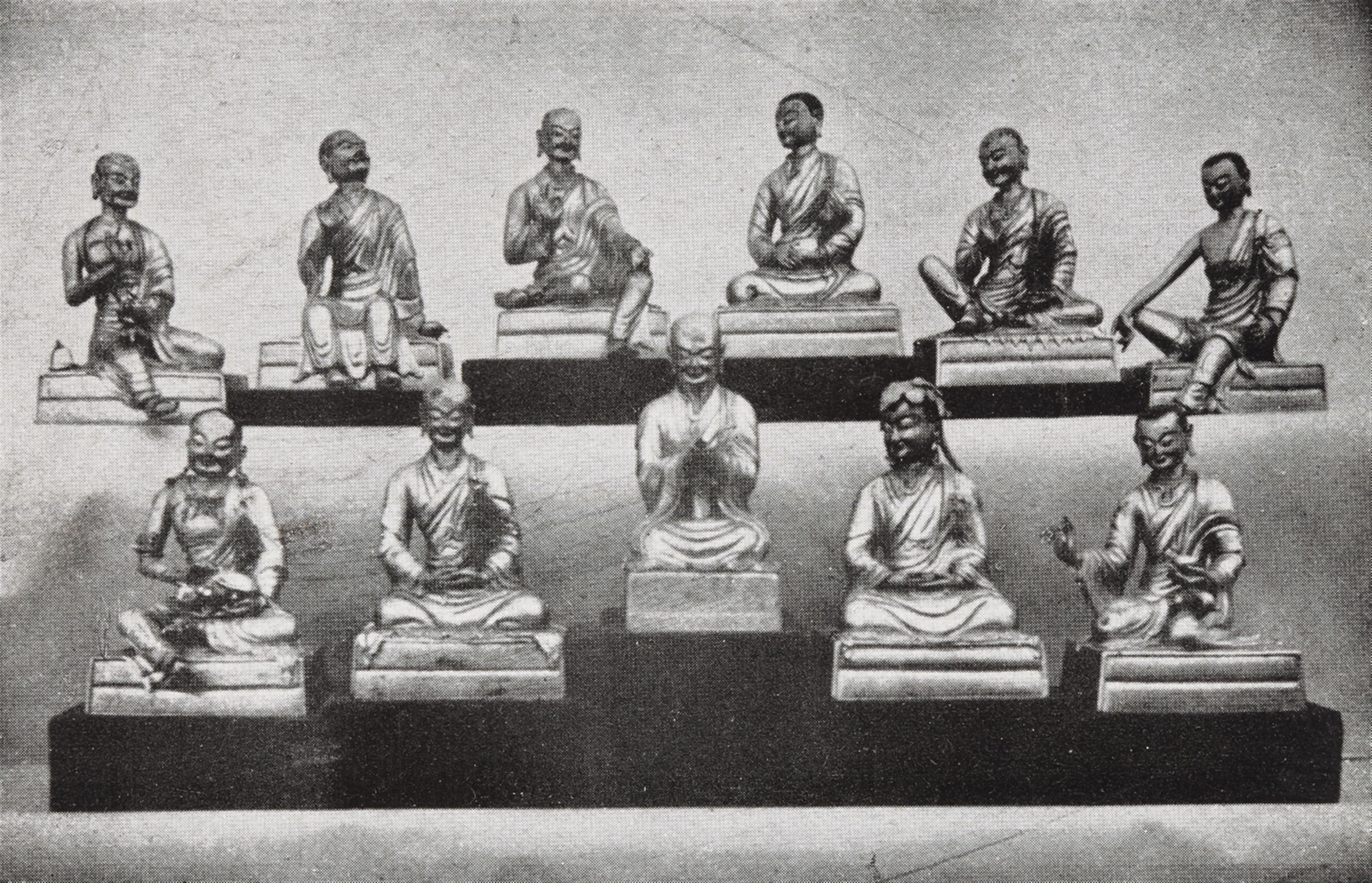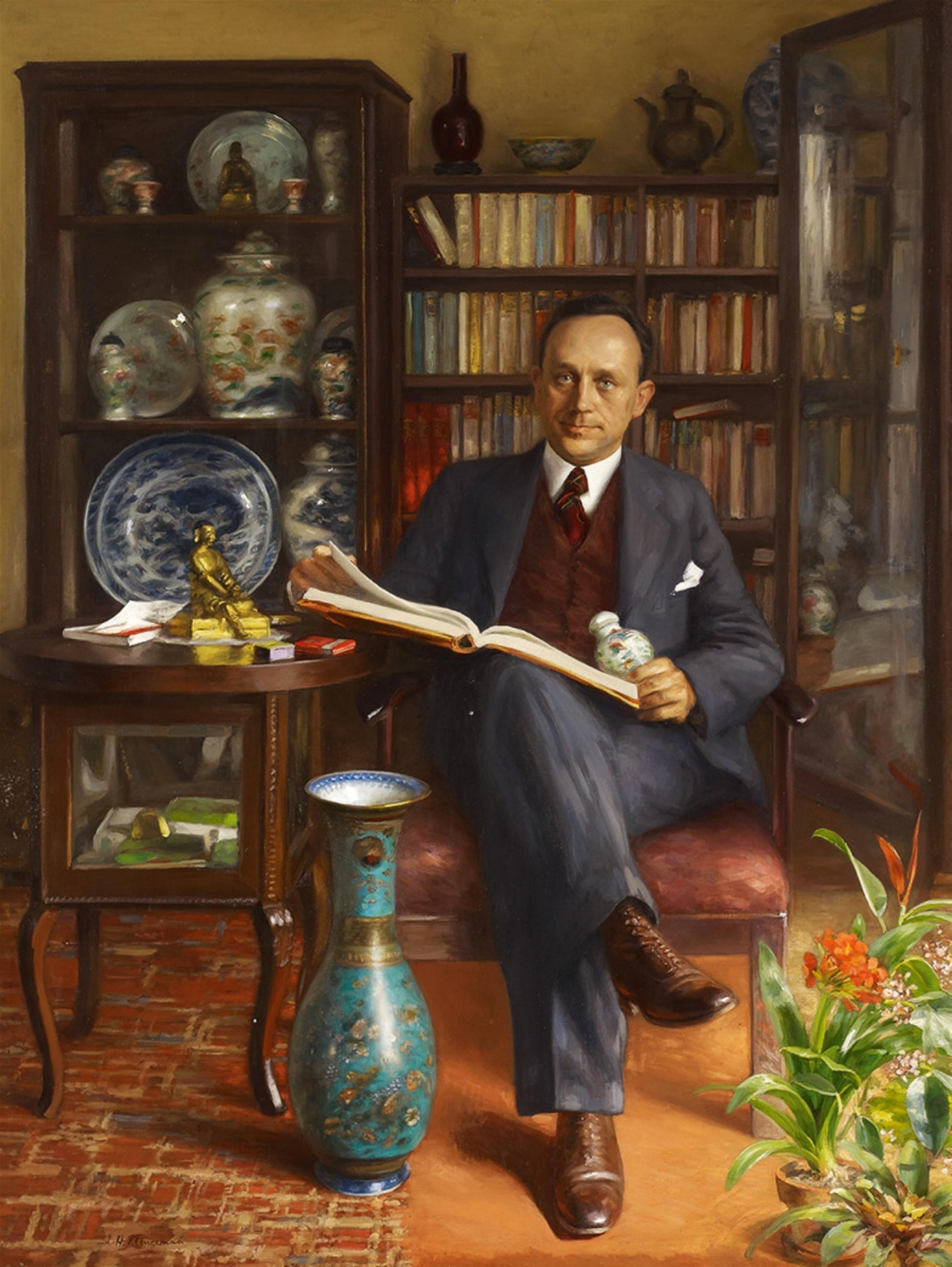A rare and important Sinotibetan gilt bronze figure of an arhat. Qianlong period (1735-1796)
A Sinotibetan gilt bronze figure of an arhat, one of the 16 great arhats, seated in lalitasana over two cushions with a carpet, engraved with flowers, a pine and lingzhi. The arhat is dressed in a sanghati draped over one shoulder, the details of the robes finely incised with a pattern of overlapping circles and flowers. The polychrome-painted eyes and mouth emphasize the graceful expression of his face. His attribute missing. Base resealed. Qianlong period (1735-1796).
Height 18.5 cm
The finely cast and gilded image represents a youthful arhat. The Sanskrit term arhat means ”he who is worthy”. Arhats are the disciples of the historical Buddha Shakyamuni and represent a class of beings who have attained enlightenment by themselves and are considered the perfect saints. The belief in and worship of arhats in China, where they are called luohan, resulted in pictorial and sculptural images and the artist felt relatively unconstrained by strict iconography in the way he represented them. Therefore identification of particular arhats is difficult, and mostly only possible by inscription.
A series representing the arhats would often comprise a total of twenty-five bronzes. To the Sixteen Great Arhats were added the layman Dharmatala and Hvashang, who invited sixteen arhats to China by imperial decree, to form a group of eighteen. Buddha Shakyamuni and his principal disciples Maudgalyayana and Shariputra, and the Four Guardians of the Directions, Vaishravana, Virupaksha, Virudhaka and Dhritarashtra make up the complete group of twenty-five.
The bronze figure of an arhat now coming up for sale most certainly belongs to a particularly fine and unusually expressive set datable to the Qianlong period, of which a total of thirteen others are known. A group of eleven images once belonged to the famous German actor and collector of Buddhist art Paul Wegener (1874-1948) and were offered at auction at Ernst Karl Becker on 29./30.11.1950 in Berlin. The auction catalogue states that the figures come from a monastery in Lhasa. The estimate was DM 2500, but since the auction went poorly, we do not know if this lot was sold.
Out of this remarkable group, four figures are today in the Philadelphia Museum of Art, gifted by actress Natasha Rambova (1897-1966) in 1963. Four others were sold at Sotheby's New York (on September 21, 2007, lots 48 and 49 [also previously in the Rambova collection], and on March 24, 2011, lots 74 and 75 [previously sold September 22, 2000, lot 23 and formerly in the collection of Alfred Gwynne Vanderbilt II]). An image of an old arhat from this set, but not of Wegener provenance, was sold at Sotheby's New York on September 3, 2013, lot 29 (formerly in a Missouri private collection).
All these sculptures are distinguished by their exquisite quality, poise and freedom of expression, with related cushion design and idiosyncratic rendering of the robes with deep folds and a loose collar. Typical of bronzes from the Qianlong period, the face and hands are painted with matte gold to create a naturalistic effect in contrast with the fire-gilding of the robes and throne cushions.
Luohan imagery was popular with Emperor Qianlong. A large group of bronze images of luohans, dated Qianlong by cast inscription and bearing names of the individuals represented, was housed in the upper storey of the Baoxianglou, a Lama temple in the garden of the Cininggong in the Forbidden City (W. Clark, Two Lamaistic Pantheons, Reprint New York 1965, and Frederick Bunce, Vajrayana Images of the Bao-Xiang Lou, 3 vol., 2008). But they do not in any way compare in quality, gracefulness and naturalism with the group discussed here.
清乾隆 銅鎏金加彩羅漢坐像
來源:德國斯圖加特 Dr. Ludwig Lutz 博士 (1899-1981) 私人收藏
Provenance
Private collection of Dr. Ludwig Lutz (1899-1981), Stuttgart
The collector’s love of Asian art probably started during his years as a university student in Munich. It is said that his first Asian object was a Japanese tôtai-shippô vase (see lot 1199). He had traveled to the Americas, but most probably not to Asian and worked for a radio broadcasting company in Stuttgart, and as a foreign correspondent and language teacher. A large portrait in oil by Hugo Klingemann (1869-1942) dating from the 1930s shows an elegant gentleman surrounded by books and display cases with Chinese porcelain. The fire-gilt bronze figure of the arhat must have been one of his favorite objects for it sits prominently on a console table next to him. Some other pieces from the Lutz collection seen in this painting are also being offered for sale in this auction.








